Bar bending encompasses the shaping of various metal bars, including steel, aluminum, copper, and busbars, each suited to different applications.
- Steel Flat Bar Bending: Steel bars are typically used in construction, infrastructure, and heavy-duty applications. Due to its high tensile strength, steel requires more force and specialized equipment for bending.
- Aluminum Bar Bending: Aluminum bars are easier to bend because of their softness and malleability. This makes them ideal for industries such as aerospace, automotive, and electronics.
- Copper Bar Bending: Copper bars are known for their excellent electrical and thermal conductivity. Copper is ductile, so it bends easily without cracking, making it ideal for applications like electrical wiring, plumbing, and heat exchange systems.
- Busbar Bending: Busbar bending is a specialized form of bending used for shaping copper or aluminum busbars, which are electrical conductors used in power distribution systems.
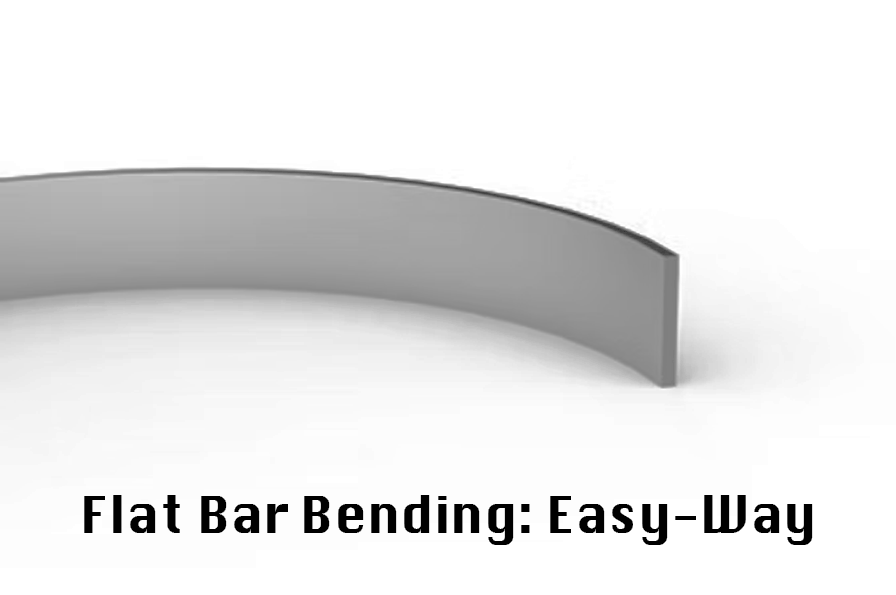
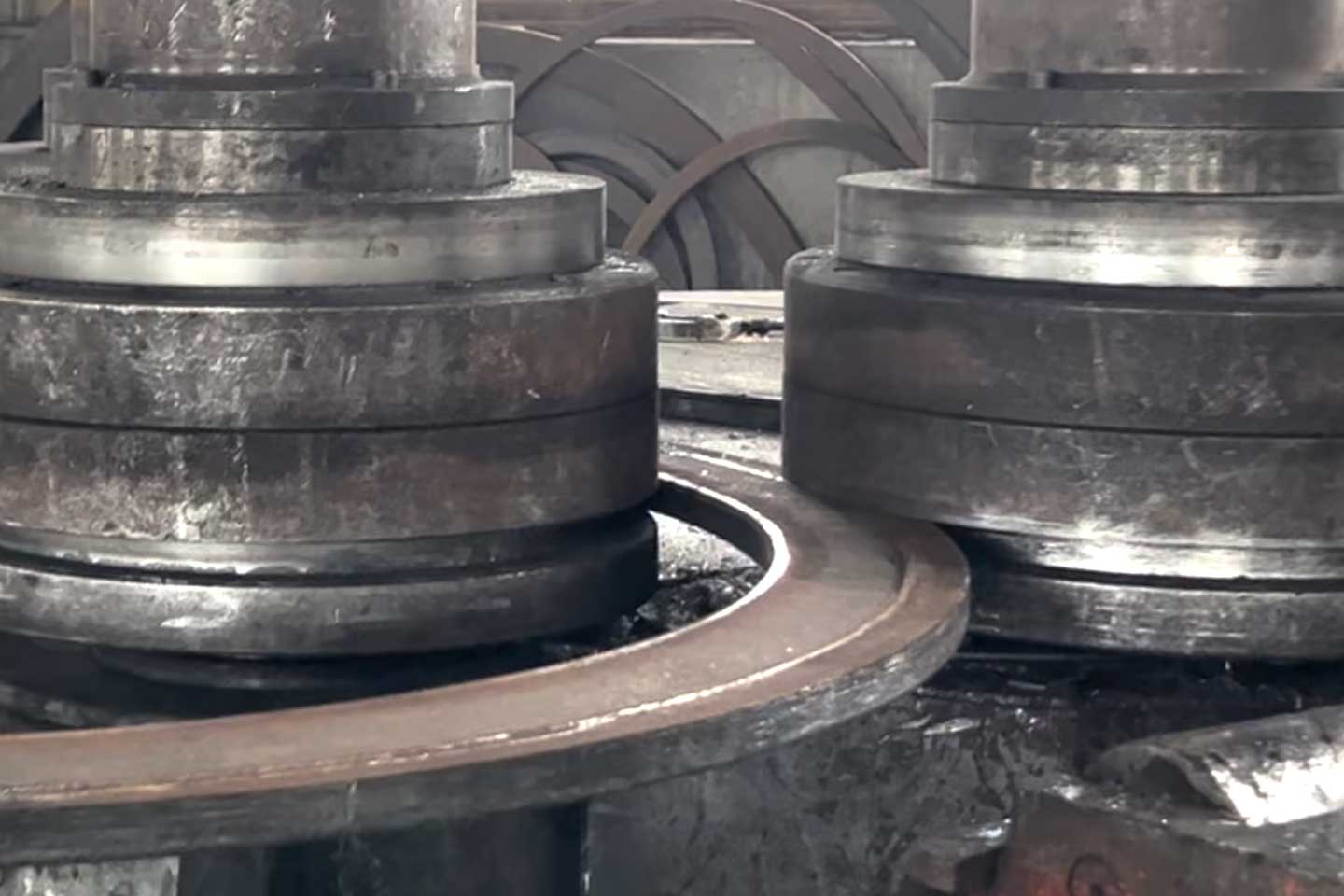
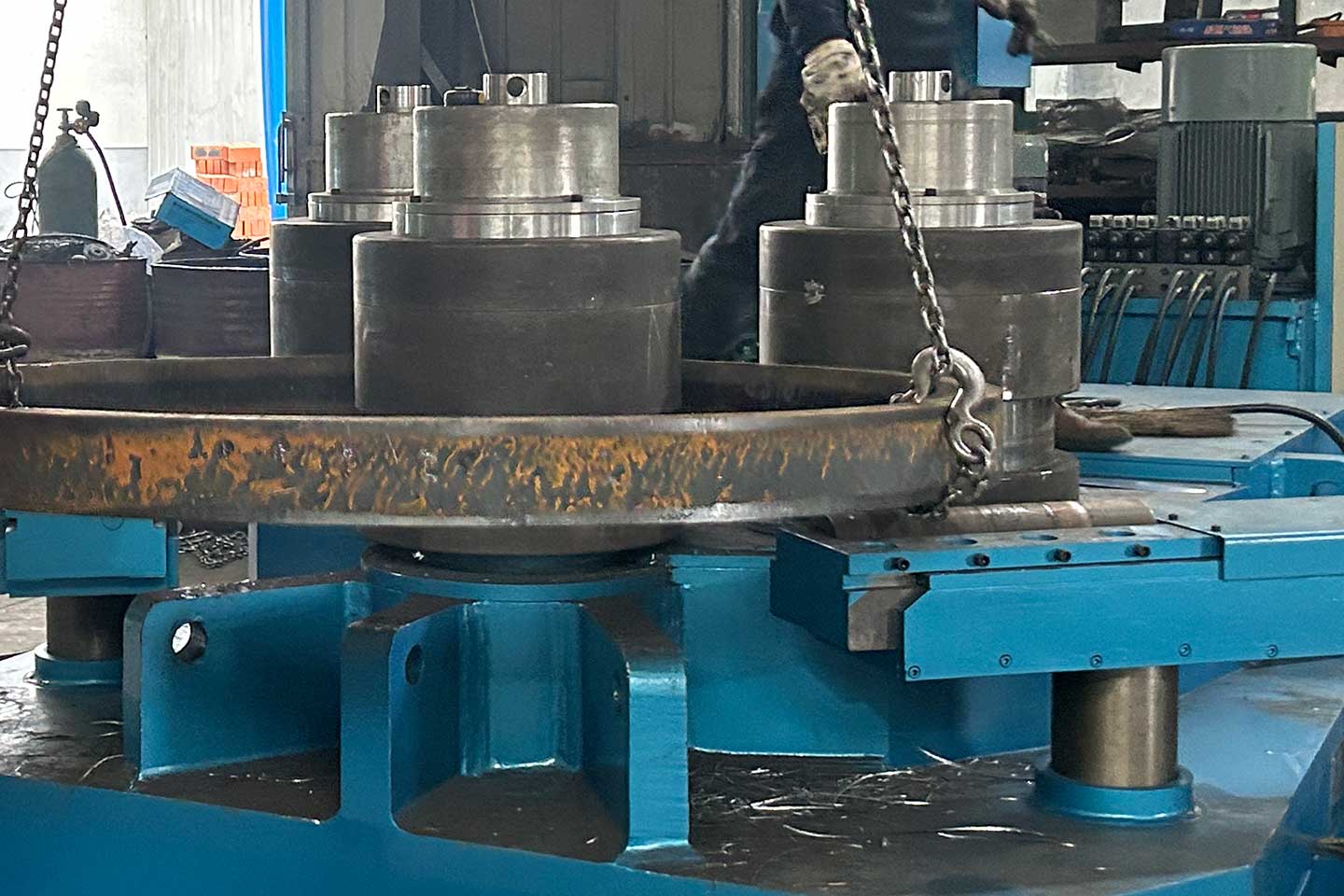
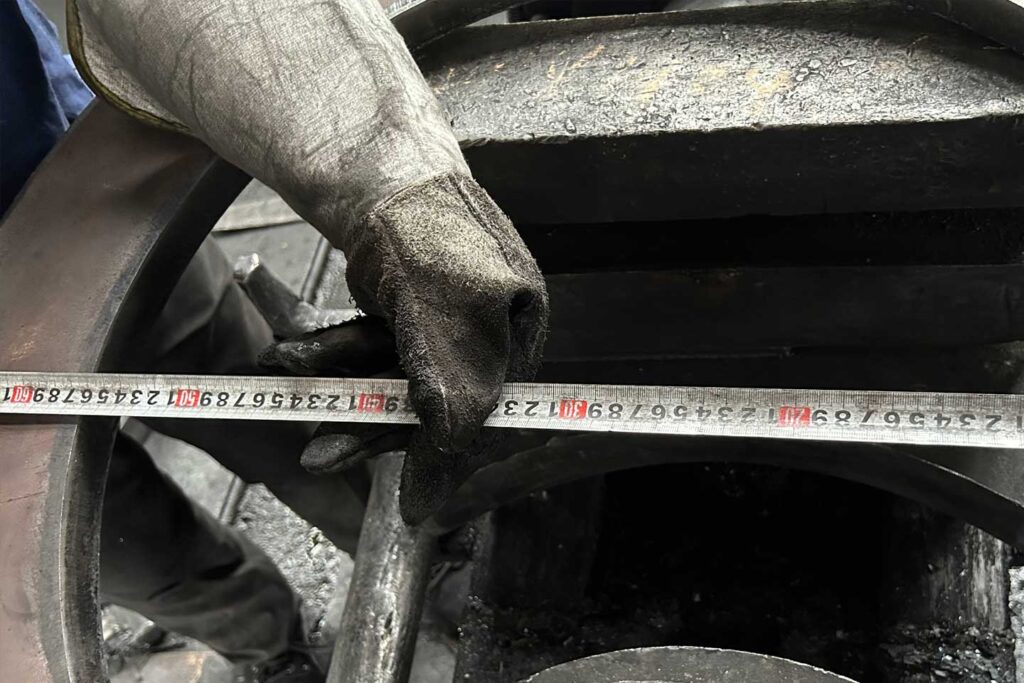
Steel Bar Bending
In the profile bending process, bar bending usually refers to steel bar bending.
The flat bar bending (roll bending) is a common profile bending technique. It is widely used in applications such as tanks, vehicles, construction, rings, flanges, and art.
Among these, the flat steel flange is a common bent profile, often used in industrial pipeline systems. It offers advantages such as strong connections and good sealing properties.
Please refer to this article for the profile bending machine and working principle used in flat bar roll-bending: https://www.profilebendingmachine.com/pbc-profile-bending-machine-rolling-process-working-principle
Different Types of Bar Bending Curves
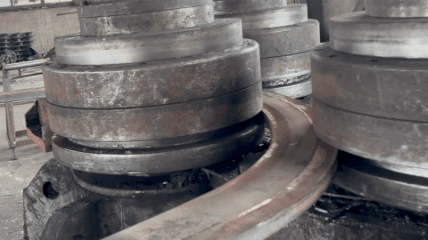
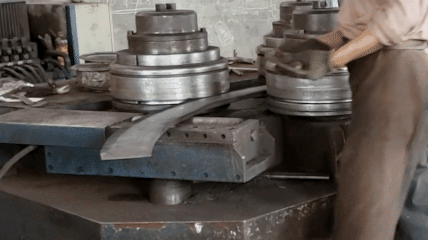
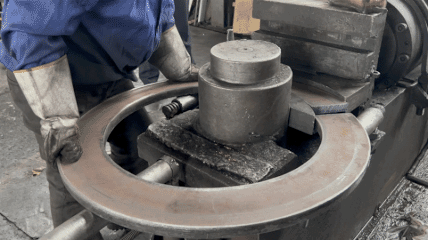
Bar bending can be performed in various ways:
- Hard-axis bending: Bending against the strong axis(X-X axis bending), which, if rolled into a ring, would resemble a washer.
- Easy-axis bending: Bending against the weak axis(Y-Y axis bending),, resulting in a shape similar to a belt.
- Helical bar bending: Often used for applications like railings on circular stairs.
- Off-axis bending: Used to form shapes like a cone segment.
Read More: PBC Series Profile Bending Machine – Bar Bending Capabilities
Spiral Bar Bending
Spiral bar bending of flat bar is a common metal forming process that optimizes its performance under dynamic loads and fluid dynamics. It offers the following optimized mechanical properties: dispersing external forces, reducing stress concentration, and enhancing stability. The 57.9-degree angle in the design reduces vortex-induced vibrations (VIV), improving the durability of the structure. The spiral shape saves space, optimizes layout, and adapts to complex shapes, meeting different design requirements and allowing for various curved forms.
Common applications include:
- Shipbuilding structures: Used in the hull side ribs to enhance strength and stability while reducing the impact of seawater flow.
- Spiral conveyors: Used in conveyor belts and spiral conveyors to transport materials through spiral pipes.
- Construction industry: Used in stair railings, fences, and supporting structures, combining aesthetic appeal with stability.
- Mechanical engineering: Used in high-strength components to enhance compression and vibration resistance.
Why 57.9? The optimal spiral pitch is five times the diameter of the pipe (Pitch distance = 5D). This pitch can be converted to a pitch angle using the formula:
Angle = arctan(5D / π × D) = arctan(5 / π) = 57.9 degrees (independent of diameter).
The profile bending machine is designed to handle bar bending in two main types: Easy Bending and Hard Way Bending. These capabilities cater to a wide range of applications in industries like construction, infrastructure, and manufacturing.
- 👉 Steel Bar Weight Calculator – Know your bar’s mass before bending.
- 👉 Round Bar Modulus Calculator – Useful for round bar bending strength.
- 👉 Solid Rectangular Bar Modulus Calculator – For rectangular bar performance under bending.